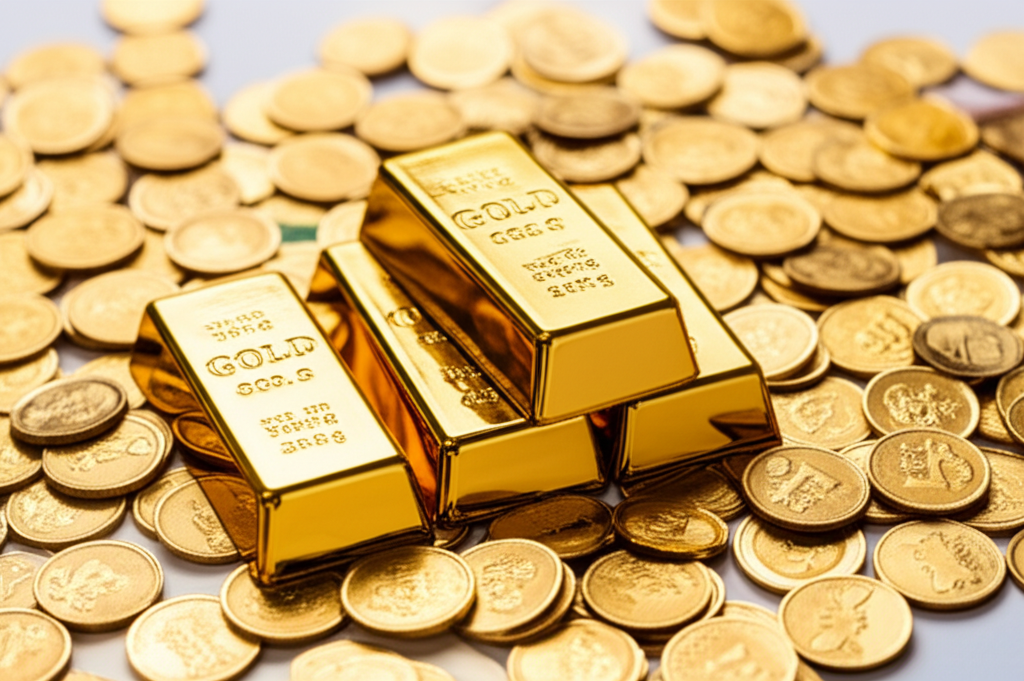Gold Hits New All-Time High as Israel–Iran Tensions Escalate
In a stark reflection of heightened global anxieties, gold prices surged to an unprecedented all-time high this week, breaching the $2,400 per ounce mark. The remarkable ascent of the precious metal is predominantly attributed to the escalating geopolitical tensions between Israel and Iran, which have sent ripples of uncertainty across international financial markets. As investors seek refuge from the storm of potential conflict, the ancient allure of gold as a safe-haven asset has once again proven its enduring value, demonstrating its critical role in hedging against geopolitical risks.
The recent spike in gold prices underscores a pervasive “risk-off” sentiment dominating investor behavior. In times of political instability, economic uncertainty, or military confrontation, assets perceived as less volatile and more reliable stores of value tend to attract capital. Gold, with its historical reputation for retaining value even during severe economic downturns or periods of high inflation, fits this description perfectly. Unlike stocks, which derive their value from company performance, or bonds, which rely on the creditworthiness of governments or corporations, gold’s intrinsic value is largely independent of these factors, making it a preferred choice when conventional investments appear too precarious. The current surge is a direct response to the recent tit-for-tat exchanges between Israel and Iran, including direct aerial attacks and retaliatory actions, which have dramatically raised the specter of a broader regional conflict in the Middle East.
Beyond the immediate geopolitical catalysts, gold’s upward trajectory has also been supported by a confluence of other factors, though the Middle East crisis remains the primary driver of this latest record-breaking run. Persistent inflation concerns in major economies, particularly the United States, have sustained gold’s appeal as an inflation hedge. While central banks globally have been engaged in tightening monetary policies to combat rising prices, the path to achieving stable inflation without triggering a recession remains complex and uncertain. Furthermore, expectations regarding future interest rate cuts by the U.S. Federal Reserve have also contributed to gold’s luster. Lower interest rates typically reduce the opportunity cost of holding non-yielding assets like gold, making it more attractive compared to interest-bearing alternatives such as bonds. However, the sheer velocity and magnitude of this recent rally point unequivocally to geopolitical fear as the dominant force. The narrative shifted from a gradual ascent driven by economic fundamentals to a sharp vertical climb fueled by a sudden, severe increase in global risk perception. Traders and institutional investors, anticipating further instability, aggressively piled into gold futures and ETFs, pushing prices into uncharted territory.
The implications of this gold rally extend beyond just precious metals markets. A sharp increase in gold prices often signals broader market anxiety and can precede volatility in equity markets or fluctuations in currency valuations. For young adults navigating the complexities of personal finance and investment, this episode serves as a powerful reminder of how interconnected global events are with market performance. Understanding the concept of safe-haven assets and their role in a diversified portfolio becomes crucial during times of crisis. While the immediate geopolitical tensions dictate gold’s short-term movements, its long-term appeal will likely continue to be influenced by global economic conditions, monetary policies, and the evolving landscape of international relations. As long as uncertainty persists, whether economic or geopolitical, gold is likely to retain its shine as a bulwark against market turmoil. The current situation demands close monitoring, as any de-escalation or further intensification of the conflict will undoubtedly have significant ramifications for gold and the broader financial markets.





